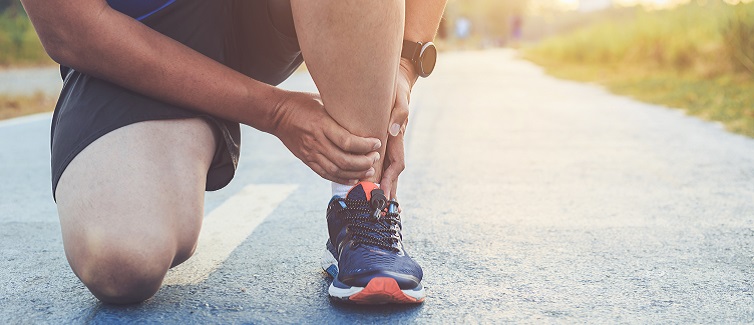Sprains and strains are common injuries with many different causes, such as falls, twists, or general overuse. A sprain is a stretch or tear of a ligament, whereas a strain is an injury to a muscle or tendon.
Both can be painful injuries that may cause swelling and require medical attention, according to Brian Hmel, PT, facility director, UPMC outpatient rehabilitation clinic, St. Francis DiSepio Institute.
The RICE Principle
If you think you have a sprain or strain, Hmel suggests following the RICE principle.
RICE stands for:
- Rest. Minimize use of the area.
- Ice. Apply for periods of 10 to 15 minutes every 3 hours.
- Compression. Use a compression bandage, but be careful not to make it too tight.
- Elevation. The affected area should be higher than the level of your heart to reduce swelling.
“During the first 48 hours, the RICE principle is helpful for any acute injury,” Hmel says. “It is important to minimize use of the affected area initially, avoid activities that cause increased pain in the area, and reduce inflammation and irritation with ice and elevation.”
Physical Therapy for Sprains and Strains
“Therapies for a strain or sprain will be similar in some aspects and different in others, but both will focus on decreasing symptoms and restoring function,” Hmel says.
Physical therapy for a sprain will vary depending on the degree of the sprain. Treatment to minimize swelling and pain and promote function may include:
- Therapeutic exercises to strengthen and stretch the muscles surrounding the affected joint.
- Joint mobilization techniques performed by a physical therapist to the affected joint.
- Heat, ice, and/or electrical stimulation.
Physical therapy for a strain will also vary depending on the degree of the strain. Treatment can include:
- Therapeutic exercises to stretch and strengthen both the involved and surrounding muscles.
- Soft tissue mobilization to break up fibrous tissue and scar tissue.
- Heat and/or ice as needed to control swelling and pain.
“For strains, the goal is allowing the injured muscle to heal while preventing a significant loss of function,” Hmel says. “Once the injured muscle can resume strength exercises, we work to restore that strength and function.”
Hmel notes that for both sprains and strains, treatment will also include educating the patient about the injury and ways to prevent injury in the future.
It’s important to remember that the length of therapy varies by patient. Your health care provider will determine a timeframe based on the severity of your injury.
To learn more, call 1-888-723-4277 or visit our website.
Editor's Note: This podcast was originally published on , and was last reviewed on .
Never Miss a Beat!
Subscribe to Our HealthBeat Newsletter!
Thank you for subscribing!
You can now select the specific newsletters you'd like to receive.
You are already subscribed.
Subscribe to more newsletters in our email preference center.
Sorry, an error occurred. Please try again later.
Get Healthy Tips Sent to Your Phone!
About UPMC Rehabilitation Institute
The UPMC Rehabilitation Institute offers inpatient, outpatient, and transitional rehabilitation, as well as outpatient physician services so that care is available to meet the needs of our patients at each phase of the recovery process. Renowned physiatrists from the University of Pittsburgh Department of Physical Medicine and Rehabilitation, as well as highly trained physical, occupational, and speech therapists, provide individualized care in 12 inpatient units within acute care hospitals and over 80 outpatient locations close to home and work.
